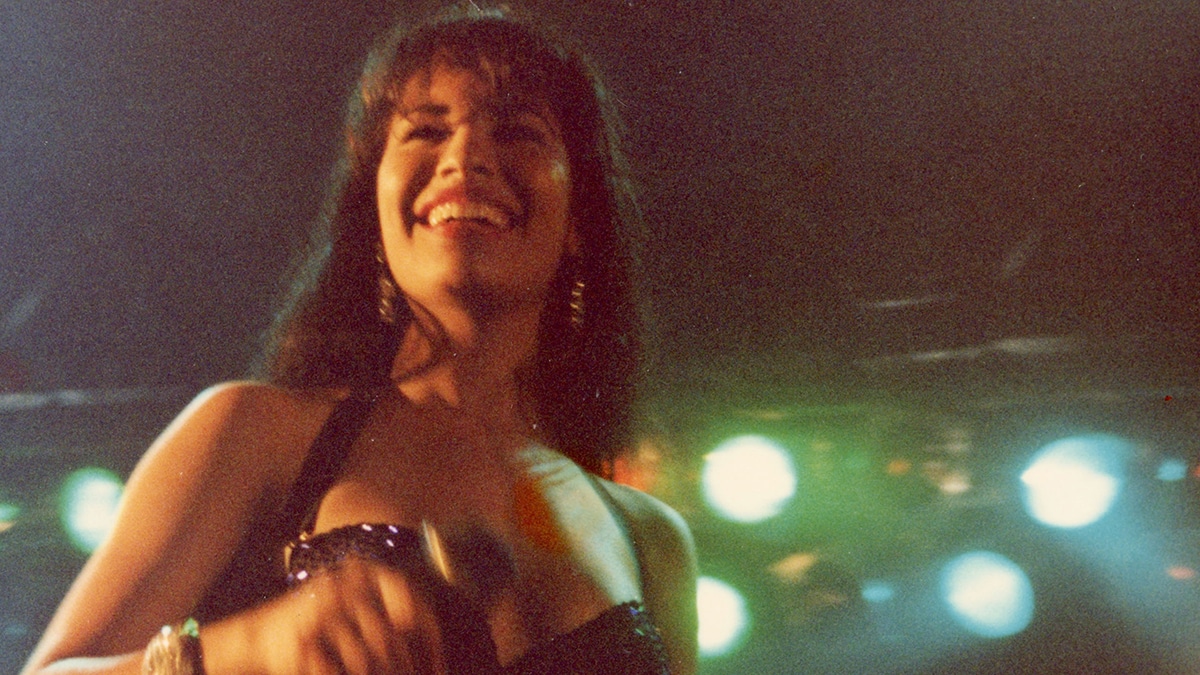I’ll admit that I was skeptical when I learned about the documentary, Selena y Los Dinos. This year marks 30 years since Selena Quintanilla was murdered, so I wondered if there was anything left to tell. Frankly, I was wrong.
Selena y Los Dinos shares the singer’s journey as she becomes the “Queen of Tejano Music” from her family’s perspective. Told through never-before-seen family movies and photos, archival and new interviews, we witness Selena grow from a shy kid with a powerful voice to the confident, sassy trailblazer in a music genre that has been primarily dominated by men. Suzette Quintanilla, drummer for Los Dinos and Selena’s sister, was ahead of her time capturing most of the footage during the ‘80s and ‘90s, way before cell phones and readily available internet.
“God bless you, Suzette, for being a pain in the ass with the camera,” Pete Astudillo, a member of Los Dinos joked during the Q&A at the SXSW screening. “It’s because of you, we have a lot of this footage.”
When the family was ready to share their story about Selena y Los Dinos, Suzette immediately felt a connection with film director Isabel Castro, who directed the documentary, Mija, about two singers with undocumented parents. She didn’t have to explain to Castro who the band was. Castro is Mexican-American and grew up listening to their music. Selena was the first Mexican-American woman she ever saw on screen.
“Her voice has played at every major life event, every celebration, every wedding, every thing. And she’s just been with us throughout our lives,” Castro said at the SXSW screening. “Every time I hear her voice, and her family’s music, I’m reminded of the beauty and the importance of our culture.”
It took four years after that initial contact to produce the documentary. Castro said there were a lot of people she could have interviewed, but she really wanted to focus on the family and the band. Suzette, her brother A.B. Quintanilla (Los Dinos’ bassist and songwriter), their parents Abraham and Marcella, and three of her bandmates – Astudillo, Ricky Vela, and Selena’s husband Chris Pérez – all shared memories and reflected on their time with Selena or “Sister” as Suzette calls her. Selena also provides insight through archival interviews.
While most of us know the story of Selena from the 1997 biopic starring Jennifer Lopez, the more recent Netflix series and Anything For Selena podcast, Selena y Los Dinos reveals more personal accounts of what it was like to start the band and how they handled each success that came their way. Plus it thoughtfully explores what it was like for them, navigating between two cultures as Mexican Americans. There are sibling fights, iconic ‘80s fashion, and behind-the-scenes stories of some of their hit songs.
Pérez, a self-proclaimed shy guy, shares more about his brief relationship with Selena and becomes emotional when he reads the letter Selena gave him before they got married. It feels like a small feat for a documentary to reveal so much during a time of social media and cameras in everyone’s pocket, but this film is a gift for the fans and the family.
“I’m grateful that we were able to capture a lot of these moments and the way that Isabel was able to put it together and to be able to tell our story,” Suzette said. “I think right when the film starts, the fact that Selena is telling the story along with us is so powerful and it makes it so relevant and so beautiful.”
Selena y Los Dinos premiered at the Sundance Film Festival earlier this year, and SXSW brought the film to the band’s home state of Texas. Except for Suzette and Pérez, who attended Sundance, the band and family initially watched the film in their homes. To see it on a big screen in a room filled with over 1,000 fans – many wearing band shirts or dressed as Selena – was amazing to them. “It’s a whole different thing to be in a room with all you guys and to feel that energy,” Pérez said at the screening. “It was amazing.”
He said some of the moments were hard for him to watch, especially with his father-in-law sitting behind him. But the whole point to him was to show how great Selena was, what she stood for, and what she represented. “It’s a testament to how Selena is still relevant today and what she represents and it’s thanks to you guys,” said Pérez.
One thing I noticed in Selena y Los Dinos is that they didn’t focus on Selena’s killer, Yolanda Saldívar. In fact, she’s only mentioned in the brief news reports about that day. The family never mentions her and they only discuss their memories of learning about the shooting and how they coped with Selena’s death. Suzette said there was a big void when her sister died on March 31, 1995.
“I miss my old life. I miss (the band). I miss just touring with them and being with them on the daily,” Suzette said. “It’s insane, because then you realize that they are an extended family. They are definitely family. They forever will be, and that’s why they’re right here next to me still to this day.”
Marcella said in the documentary that they took Selena’s life, but “we’re going to keep her alive through her music.” And that’s what Selena y Los Dinos does. Its heartfelt storytelling told through the people who loved her the most will ensure that Selena’s legacy will continue.

